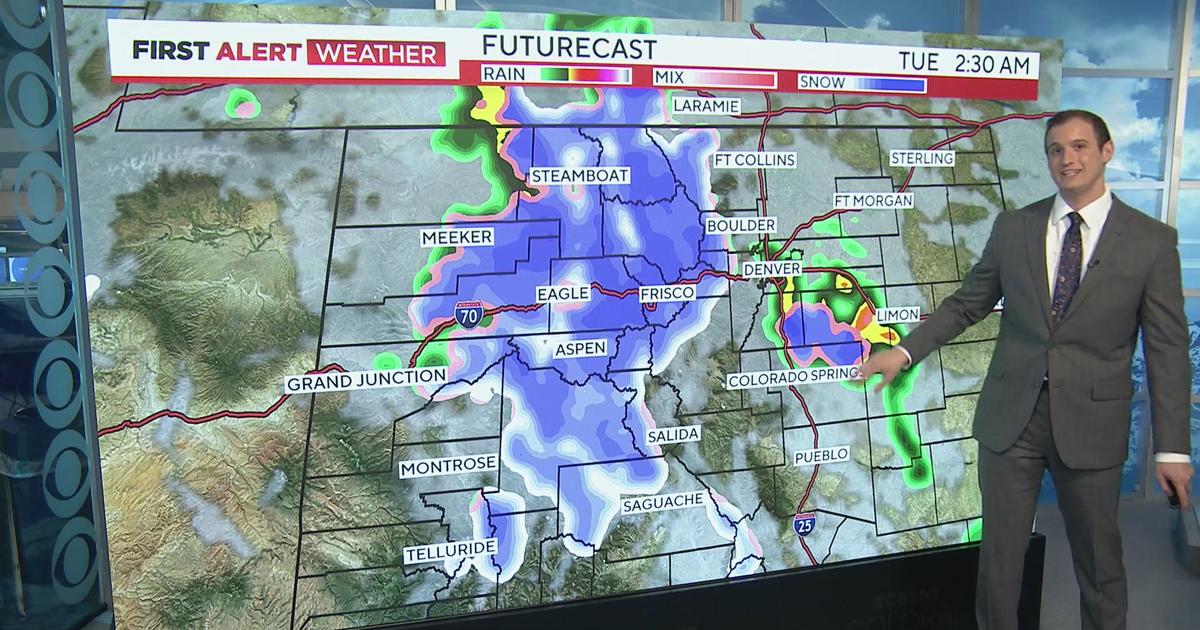Big Hail Can Stay Aloft for 30 Minutes
HUDSON, Colo. (CBS4) - "There's still something fascinating even with all the damage, there's something fascinating about it," said Laura Andersen as we visited with her at her parents' home in Hudson. She keeps huge hailstones in her parents' freezer from a Memorial Day storm. They should expect that since she graduated with a meteorology degree.
"You can see those rings pretty well in there," she observed as we used a hot knife to cut through a couple of the hailstones. They look like tree rings. In a way, that's similar to the idea.
You start with a good strong thunderstorm said National Weather Service meteorologist Bob Glancy, who works at the NWS' Boulder office. For that, you need summer temperatures, with the sun heating the earth. Space being cold, there's a big difference in the surface temperature and the temps way up high.
"The greater the temperature difference from the near the ground to high up in the atmosphere," said Glancy.
That creates a rush of air heading up – updrafts. "Basically the stronger the your updraft, the easier it is to make a thunderstorm." And hail.
Thunderstorms will have downdrafts and updrafts. The more powerful they get, the greater their ability to hold the hail and keep it circling like a juggling act.
As water in the cloud gathers it can freeze high up. "As it cycles, it picks up a little more and gets a little bit bigger. A little more moisture and gets a little bit bigger. A little more moisture, gets a little bit bigger. If you have a really powerful updraft you can hold hail the size of baseballs. Or softballs up there until it finally falls out of the storm." Said Glancy.
Each time the hail goes up and freezes it creates another ring. That's why the hailstones we cut open showed the rings. The stronger the updraft, the longer the hail can stay aloft. "Oh, minutes to tens of minutes… maybe even a half an hour," said Glancy.
Updrafts can get up to 100 miles an hour. That makes monster hail, like the record hailstone that landed in Vivian, South Dakota last year. It measured eight inches in diameter.
NOAA says Nebraska, Colorado, and Wyoming usually have the most hail storms. The area where the three states meet has earned the nickname, "hail alley." "The reason why this area gets so much hail," a NOAA website explains, "Is that the freezing levels in the high plains are much closer to the ground than they are at sea level, where hail has plenty of time to melt before reaching the ground."
Lucky us. Well, lucky if you're Laura, who loves the stuff, in spite of the fact that she's now dealing with the insurance company over damage to yet another car. (She had one damaged when she was caught in Windsor in the 2008 tornado – while packed some nasty hail.)
"I've always been a huge severe weather fan."



